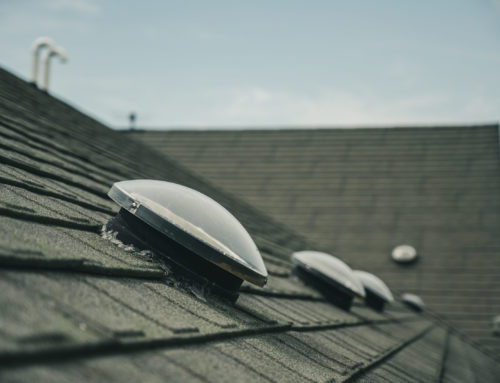In the quest for renewable and more environmentally friendly sources of energy, many people are now considering installing solar panel systems in their homes. But switching over to solar energy is a pretty big move, and it does require thorough consideration of all the factors involved. Here are some surprising facts about solar energy and solar energy systems you need to know before taking the plunge.
- Solar energy has been used by humans for thousands of years
The idea behind solar energy or solar heating isn’t new. Some of the earliest recorded uses date back to 700 BC when cooking fires were started by magnifying the light from the sun through glass lenses. The Greeks and Romans even used mirrors to light torches used in religious ceremonies. By the 15th century, Leonardo da Vinci had conceived of the idea of harnessing energy from the sun.
- The first working solar cells were developed in 1883
The photovoltaic effect upon which solar energy technologies is based was discovered by French physicist Edmond Becquerel in 1839. While experimenting with metal electrodes immersed in a conducting solution, Becquerel noticed that the circuitry produced more electricity when exposed to a light source.
In 1873, a scientist named Willoughby Smith discovered the photoconductive qualities of selenium. By 1876, William Grylls Adams and Richard Evans Day had begun applying Becquerel’s photovoltaic principle to the material. The two discovered that selenium could actually generate electricity after exposure to light.
It would take nearly five decades after the discovery of the photovoltaic principle before the first selenium solar cell was developed. Invented by Charles Fritz in 1883, this was the precursor to modern solar cell technology, although current systems use silicon instead of selenium.
Bell Laboratories developed the first silicon solar cell in 1954. The precursor to modern solar systems, the silicon solar cell was heralded as the “realization of one of mankind’s most cherished dreams”, which is the utilization of the sun as an almost infinite source of energy.
- Solar panels utilize photovoltaic cells that contain silicon semiconductors
The typical home solar panel system consists of several components, including panels, an inverter, a battery, and a regulator. They also include the necessary wiring and support materials and components. Light from the sun is absorbed by the solar panels and is then converted to electricity by the system. Most systems also include a battery that stores electricity for later use, such as during cloudy days or in the evening.
Solar panels come in two basic types: photovoltaic panels that directly transform sunlight into electricity and solar thermal panels that heat water through the absorption of heat from the sun.
All solar panels rely on photovoltaic cells that contain semiconductors, which are typically made of silicon. These components are primarily responsible for converting sunlight into electricity. Most modern systems can convert up to 20% of the sunlight that they receive. Commercial systems are considerably more efficient, converting as much as 40% of the sunlight.
- The cost of going solar has declined considerably over the years
The costs of installing and operating solar panels have declined considerably since they became widely available in 1977. Back then, the cost of generating a single watt was about $77. By 2017, the cost of generating a watt of electricity had gone down to $0.21 per watt. This represents about a 99% decline in the cost of solar power electricity generation. It also costs only $0.39 per watt for a completely assembled module.
Of course, the cost of installing a solar panel system is still pretty high, particularly for homeowners. However, such a system will pay for itself in a relatively short period of time, considering the savings you will incur in electricity costs, not to mention the government subsidies available in many countries.
It is also worth noting that solar panel systems increase home values considerably. Furthermore, such systems require almost no maintenance. Over time, as technology advances and solar panel systems become more efficient, the cost of solar energy is expected to go down even further.
Solar energy is, of course, freely available to anyone, and it is a seemingly limitless energy source. Even with the costs associated with installing a solar panel system, solar energy is still a much less costly option than fossil fuel usage.
It is estimated that using solar energy saves as much as 75 million barrels of oil every year. It also reduces the production of carbon dioxide by as much as 35 million tons.
Perhaps more compellingly, solar energy costs very little to operate. Even without subsidization, it only costs 4.3 cents per kWh to generate electricity via a solar panel system. This is considerably cheaper than the costs associated with any other fossil-fuel powered system. For example, electricity from natural gas costs as much as 7.8 cents per kWh to generate. Depending on the community, solar-powered electricity may be even cheaper to generate than their coal, diesel, and even nuclear-powered alternatives.
- The costs of going solar can be recouped within a few years
For many homeowners, the biggest obstacle to going solar is the cost of installing a solar panel system at home. While it is true that the initial financial outlay can be considerable, most homeowners can expect to recoup their investment within a relatively short period.
In fact, breaking even has become one of the biggest selling points of solar panel systems in recent years. In 2019, most homeowners that have installed solar panel systems saved enough on energy costs to make back the entirety of their investment in about seven to eight years. In communities with higher than average utility fees, the break-even period was even shorter at three to four years.
- Solar energy is a virtually limitless resource
Solar power is about the only energy source we have access to that is virtually limitless. Like wind energy, it is certainly one of the most abundant. In fact, the Earth receives all the solar energy it needs to supply the power requirements of everyone on the planet within one hour. To put it another way, if the Mojave Desert were covered with solar panels, we would be able to generate twice as much power as the entire United States consumes within a year.
The vast availability of solar energy doesn’t only mean more electricity available for everyone. It also means less reliance on traditional sources of fuel such as oil, coal, and natural gas. This in itself could effectively put an end–or at least reduce–environmentally hazardous manufacturing and industrial processes.
- Solar panels don’t necessarily need full sunlight
Interestingly enough, you don’t necessarily need to have your solar panels exposed to direct sunlight all the time. Of course, they will be able to collect more solar energy the more they are exposed to the sun. But most modern systems are efficient enough to collect solar energy and transform it into electricity even during cloudy days and winter months. This means that your solar panel system will continue to keep collecting and generating energy, even if the sun isn’t shining brightly overhead.
Nighttime is a totally different matter. Because there is obviously no sun at night, solar panel systems can’t collect or generate electricity. However, you can utilize a solar battery storage system that will keep on powering your household at night. Some homeowners even sell off some of the excess energy that they have collected to the national grid, which helps them pay off the cost of their storage battery investment. Plus, they still get to have all the free electricity they need during the day when the sun is out.
- It will take about six months to install a working home solar power system
Solar energy is one of the fastest sources of energy to deploy. During calamities or natural disasters, many relief workers and governments turn to solar energy to get access to electricity quickly. This was especially effective during the hurricanes in Puerto Rico, where companies such as Tesla managed to build solar power facilities within a few weeks.
Ironically, it will take quite a bit longer to get solar power capability in your home. Because of factors such as securing permits, getting zoning approval, and getting your system hooked up to the national power grid, it can take a few months before your system is up and running. Add to that the installation process itself, and you’re looking at approximately six months to have a fully working solar panel system.
- Community solar systems are a viable alternative to individual systems
You don’t necessarily have to install your own solar panel system to realize the potential of solar energy. Over the past few years, a number of neighborhoods have set up shared or community solar farms that provide electricity to hundreds and even thousands of households in the area. This has proven to be an effective way to reduce the costs of going solar, as the expenses are divided between the members of the community.
Interestingly enough, some of the biggest proponents of community-based solar energy initiatives are utility companies, many of whom have a vested interest in obtaining some of the energy they provide to their customers from renewable sources. Far from considering solar energy sources as competition, these utility firms see solar energy farms as valuable partners in the quest to provide for the energy needs of everyone in the community.
Clearly, solar energy has come into its own as a viable energy source for the 21st century and beyond. As the demand for energy increases along with the need for renewable energy sources, solar panels will be an increasingly popular commodity in the coming years.

